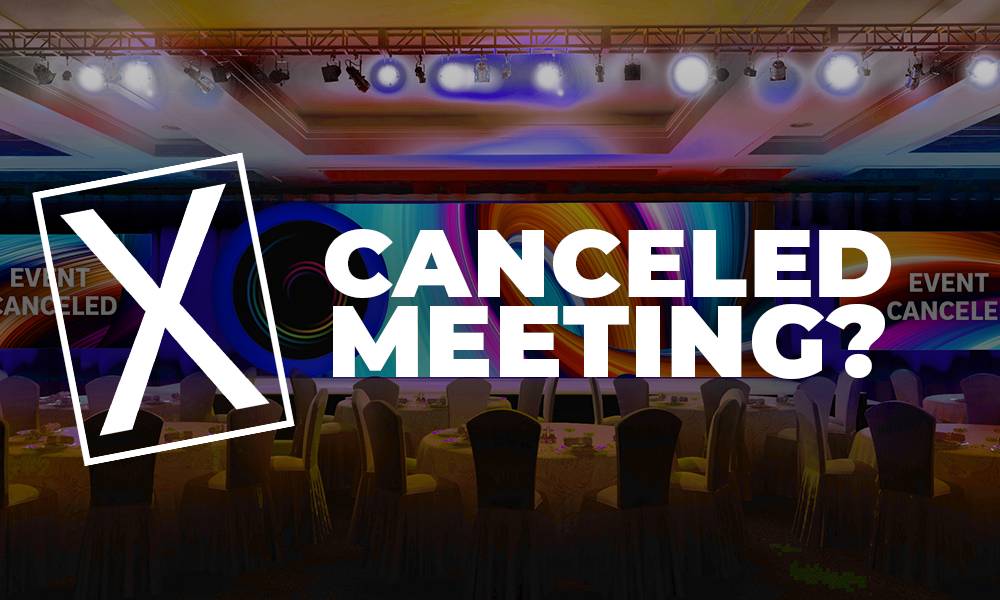We fancy ourselves Pirates of the presentation world. And not because we have a passion for eye patches and talking parrots. We’re pirates because like pirates hundreds of years ago, and even how Steve Jobs coined it, we believe in following a different set of rules. We believe in challenging the notion most people have about what a ‘presentation’ is by encouraging presenters and speakers to stop playing it safe and start connecting with people on a deeper, HUMAN level.
So if we’re Presentation Pirates, then who’s the Presentation Navy?
If the Presentation Navy had a Wikipedia page, and we were Presentation Pirates Historians, we would hypothesize that May 22, 1990 was the day of its founding. Why? What’s so special about May of 1990? Well, besides the very important and relevant fact that Back to the Future Part III was reigning #1 at the box office, it marked the official release of Microsoft PowerPoint.. Yep that’s right. The Presentation Navy set sail with a piece of software that’s become a mixed cocktail of SquarePlanet ally, tool and nemesis all in one.
26 years later, PowerPoint has become such a widespread presentation tool that it’s often used as a synonym to describe an actual presentation.
“I have to give a PowerPoint today.”
“Can you send me your PowerPoint deck.”
If you utter these words inside our orange walls, brace yourself for a barrage of dirty looks, tomatoes and expletives. Just kidding, tomatoes are way too messy and tennis balls usually do the trick. Don’t worry, it’s out of love.
When it comes to communicating effectively and creating amazing presentations, here are 3 ways PowerPoint basically ruined everything and what you can do about it. Oh, we also tried to package them in nice little memorable sayings so they STICK.
1. If you design first, you’re the worst.
Because of things like templates and predetermined choices of bullet-point-to-image-and-header ratios, it’s become a habit of so many presenters to open PowerPoint (or Keynote, Prezi, etc.) first and begin creating SLIDES. Too often this is done without ANY consideration of the message itself, how to impact the audience, etc.
[bctt tweet=”If you design first, you’re the worst. #PresentationNavy #PowerPoint” username=”squareplanet”]
This precedent is even evident in the questions people often ask us during training and workshop sessions:
“How many slides should my presentation have?”
“What if I used this stock image of a multi-cultural business handshake to demonstrate cooperation instead of this stock image of a multi-cultural business handshake to demonstrate cooperation?”
The answer is, OH MY GOODNESS IT DOESN’T MATTER! If your message isn’t right, forget about design. It’s not that great visual design isn’t an effective way to engage people, but the issue is focus. It’s about what matters most and where you spend your time. It’s all about content.
We recommend you spend 87% of your time working on your MESSAGE; on how you’re actually going to connect with your audience. That means your first step should be to open Word or Pages, or grab a whiteboard. Not PowerPoint.
2. Lose the text, learn to flex…
…your presentation skills. Not as strong as #1, I know. Stay with me.
[x_image type=”none” float=”none” src=”https://www.squareplanet.com/wp-content/uploads/2016/06/PPT-Template.png” alt=”PowerPoint Template” info=”none” info_place=”top” info_trigger=”hover”]
[x_icon type=”angle-up”] Does this look familiar? [x_icon type=”angle-up”]
The simple truth is, most people feel so compelled to dump text all over their slides because PowerPoint is actually PROMPTING you to. Remember, outline FIRST, then start putting together the visual component of your presentation. So the next time it finally DOES become time to put some design together for your presentation, remember this little nugget about how to use text most effectively.
Ready?
It might blow your mind.
[x_icon type=”bomb”] You don’t need any of it. None. Zilch.
One of the biggest misconceptions that PowerPoint has perpetuated is that the messages you’re speaking about should also be directly represented in words on a screen behind you. Now, there are lots of circumstances where it can help make a key message memorable, but where people fall into major trouble is in WAY overdoing it. When you make us READ a slide, rather than immediately digest a brief message, what you’re actually doing is making our senses compete with one another.
We’re listening to you but our eyes are fixated on following the text. It’s Eyes vs. Ears: The Battle for Audience Attention Spans. Spoiler alert, nobody wins. We end up doing both half as well and the key message you hoped was resonating with us now isn’t much more than an echo in the distance.
[x_blockquote cite=”Albert Einstein” type=”center”]We all know that light travels faster than sound. That’s why certain people appear bright until you hear them speak.[/x_blockquote]
Ouch. His words not ours.
Our tip? Use key phrases in text to highlight major takeaways, otherwise you can accomplish a lot with just full-bleed images. Simple, evocative and message-appropriate imagery engages our minds much more effectively than text alone. Plus, it keeps our attention on what matters most: YOU.
[icon type=”bell”] Get more visual tips with The 10 Commandments of Presentation Design
3. You haven’t tried ‘til you’ve ditched your slides.
The greatest trick PowerPoint ever played on presenters was making them think it needed to exist.
That’s right. The most troublesome idea that’s come from PowerPoint is that you need to use it in the first place. For thousands of years the greatest communicators in the world didn’t need things like PowerPoint to convey a message. Aristotle didn’t need an Excel-integrated pie chart in order to captivate an audience. MLK Jr. isn’t revered for his famous 5-bullet-pointed slide entitled “My Dream.” It’s because visual aids often are more crutches than aids.
[bctt tweet=”MLK Jr. isn’t revered for his famous 5-bullet-pointed slide entitled “My Dream.” #publicspeaking” username=”squareplanet”]
If you really want to master your presentation and develop a communication strategy that ACTUALLY works and makes a memorable impact on your audience, try delivering it without slides. Even if it’s just as practice, build a presentation without a single visual aid. If you can’t make it work as if you’re sitting across the dinner table having a conversation, you’re doing something wrong. It’s unnatural.
Ditch your slides, lose the text-bombs and stop designing first. It’s not your fault though. It’s PowerPoint’s fault.
[x_callout callout type=”left” title=”Chime In” message=”Agree? Disagree? Offended because you named your first born son PowerPoint? If you answered yes to this last question, you should seek help elsewhere.” button_text=”Share Below in the Comments” button_icon=”commenting” href=”#comments”]
[x_author title=”Who wrote this masterpiece?”]
[x_image type=”none” float=”none” src=”https://www.squareplanet.com/wp-content/uploads/2016/03/Code-of-Content-Promo-Graphic.png” alt=”Get Your Free eGuide” link=”true” href=”https://www.squareplanet.com/code-of-content-eguide/” info=”none” info_place=”top” info_trigger=”hover”]





0 Comments